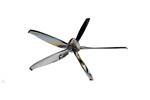Xenia presents carbon fiber-reinforced PVDF compounds functionalized for 3D printing
3D printing materials portfolio now extends from unfilled PVDF to carbon-fiber-reinforced PVDF, adding to the end product’s high performance and chemical resistance.
Source | Xenia Materials
(Mussolente, Italy), global developer of carbon fiber-reinforced polymers (CFRP), presents its range of CFRP PVDF-based compounds for 3D printing pellet-fed applications. This group of materials combines the properties of the integrated carbon fiber with PVDF, providing high performance and chemical resistance.
Use of carbon fiber in 3D printing helps prevent warping during the printing phase, maintains a smooth surface finish, and ensures dimensional stability and low thermal expansion. According to the company, by adding carbon fiber to the base material, it enhances the qualities of the PVDF polymer. This novel mix keeps the ease of use of regular PVDF while boosting strength and reducing electrical resistance, meeting ATEX standards.
Xenia Materials engineers and manufactures high-performing materials, offering a wide choice of carbon and/or glass fibers as well as ultra-light, structural thermoplastic composites. Furthermore, Xenia has functionalized and adjusted each formulation for the 3D printing field, to be used in any type of fused granulate fabrication (FGF) printer. End products markets include sports and agriculture, aerospace, automotive and transportation, oil and gas and alternative energy, building and construction, infrastructure and machinery and medical.
Related Content
-
Otto Aviation launches Phantom 3500 business jet with all-composite airframe from Leonardo
Promising 60% less fuel burn and 90% less emissions using SAF, the super-laminar flow design with windowless fuselage will be built using RTM in Florida facility with certification slated for 2030.
-
Reinforcing hollow, 3D printed parts with continuous fiber composites
Spanish startup Reinforce3D’s continuous fiber injection process (CFIP) involves injection of fibers and liquid resin into hollow parts made from any material. Potential applications include sporting goods, aerospace and automotive components, and more.
-
Active core molding: A new way to make composite parts
Koridion expandable material is combined with induction-heated molds to make high-quality, complex-shaped parts in minutes with 40% less material and 90% less energy, unlocking new possibilities in design and production.



